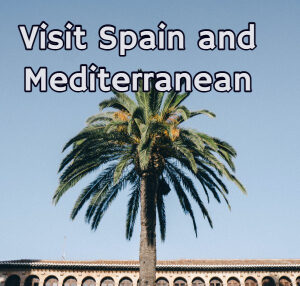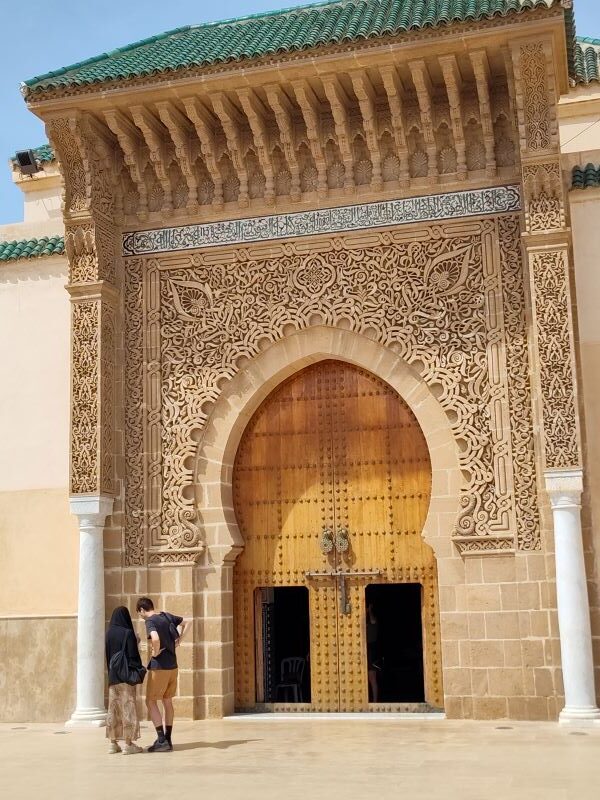Visit Meknes Morocco; visit this Unesco World Heritage site and Medina
After a fantastic visit to ancient Volubis, the Unesco site of Meknes in Northern Morocco’s inland area was also worth a visit to explore the history and culture of the area. I love to visit historic sites especially if it is a UNESCO World Heritage worthy and this historic city is definitely worth visiting and If you decide to take a group tour of the region, this is automatically covered. I will share some of the easy group tours below for you to consider when visiting Meknes.
If you plan on visiting overnight or longer, then you definitely can spend more time relaxed and touring the many attractions in this ancient capital city of Morocco and the great ruler, Sultan Moulay Ismail.
Not knowing enough of Meknes and researching the significance of the city, I decided to go on a group tour along with having a local guide of the area to really give some deeper insight and knowledge to what we are seeing and what makes this significant to creating the city as a World Heritage site.
Check out the highlights to visiting below:
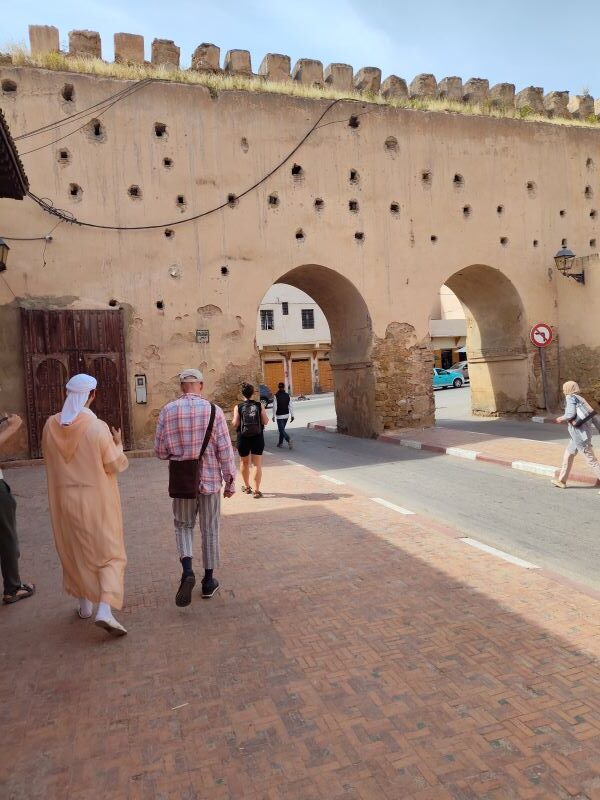
Where is Meknes located at
Meknes is a city in northern Morocco, located near the Middle Atlas Mountains. It’s about 130 kilometers (80 miles) east of the capital city, Rabat, and roughly an hour west of the more well-known city of Fes. Positioned on a fertile plain, Meknes is part of the historical heartland of Morocco and serves as a gateway between the Atlantic coast and the interior regions. The city’s location made it an important strategic and cultural center, especially during the reign of Sultan Moulay Ismail in the 17th century, when it briefly became the imperial capital. Today, Meknes remains one of Morocco’s four imperial cities and blends historic charm with a more relaxed atmosphere than its larger neighbors.
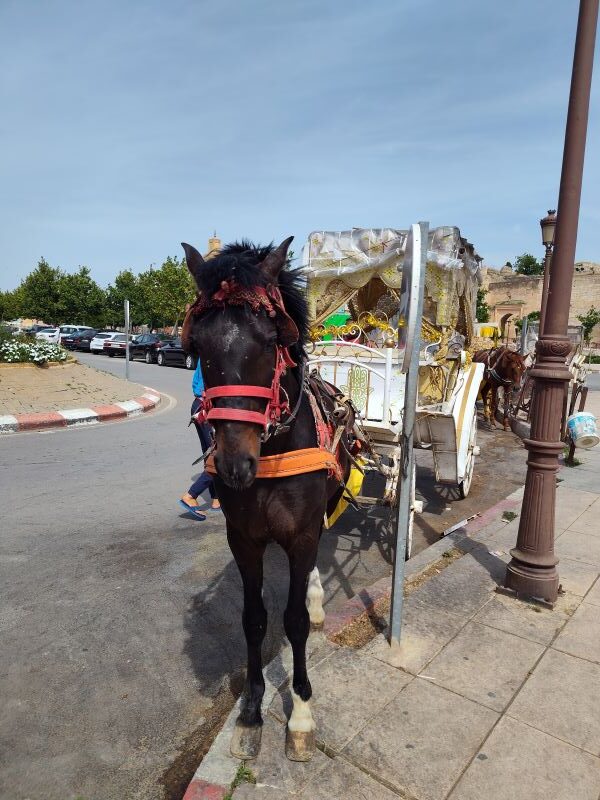
How to get to Meknes
Sure! Here’s an outline on how to get to Meknes:
1. By Train
- From Casablanca
- Take a direct train from Casa Voyageurs station
- Duration: ~3.5 to 4 hours
- Comfortable and reliable option
- From Rabat
- Direct trains available frequently
- Duration: ~2 hours
- From Fes
- Short and easy route
- Duration: ~45 minutes to 1 hour
2. By Bus
- CTM and Supratours offer regular services to Meknes from major cities
- Often cheaper than the train but may take longer
- Make sure to book tickets in advance during busy travel periods
3. By Car
- From Casablanca: Take the A3 and A2 highways (toll road)
- From Fes or Rabat: Also accessible via A2 highway
- Self-driving gives flexibility, especially for exploring nearby areas like Volubilis and Moulay Idriss
4. By Plane
- Meknes does not have its own airport
- Nearest airport: Fès–Saïs Airport (FEZ)
- About 1 hour by taxi or car from Meknes
- You can also take a train or bus from Fes to Meknes
5. Private Transfers or Tours
I feel for the price and effort, taking a group tour is more economical and practical to visiting key sites to the region unless you plan on staying overnight and tour on your own. I provide some tour options below
- Available from major cities like Fes, Rabat, or Casablanca
- Convenient if you’re short on time or prefer door-to-door service
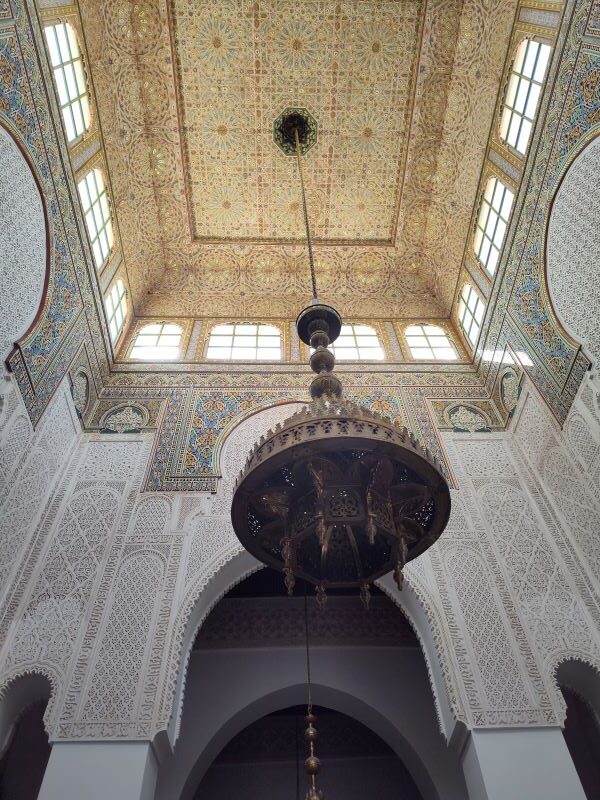
Top attractions and places to visit in Meknes
Here’s an outline of top attractions and sites to visit in Meknes, it’s easy enough to do a walking tour of the key sites here and having a local guide really helps with touring all the main places at Meknes.
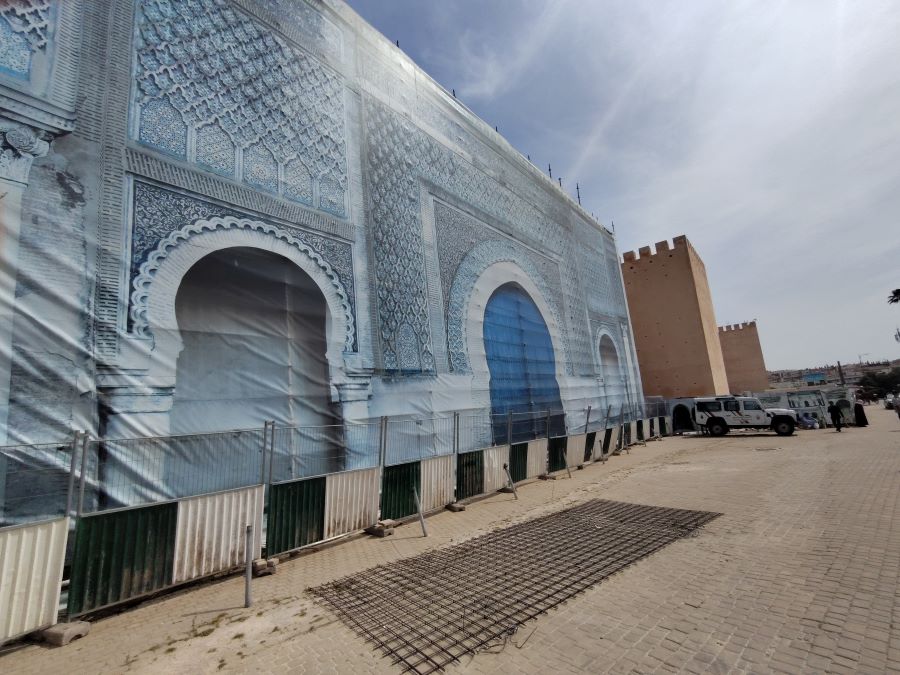
1. Bab Mansour
Bab Mansour is one of the most iconic landmarks in Meknes and is often considered one of the most impressive gates in Morocco. Built in the early 18th century under the rule of Sultan Moulay Ismail and completed by his son, the gate stands as a grand entrance to the old medina. It features massive wooden doors, intricately carved stonework, and stunning zellij tile mosaics in shades of green and blue. The Arabic calligraphy and geometric patterns reflect the craftsmanship of the era and the sultan’s ambition to make Meknes a symbol of power. Though it’s no longer used as an entry point, Bab Mansour remains a popular photo spot and a testament to Morocco’s imperial history.
- Grand, ornamental gate and symbol of the city
- Located at the entrance to the old medina
- Known for its intricate tilework and inscriptions
Here’s a little more background about Bab Mansour for more information.
2. Place El Hedi
Place El Hedim is the central square of Meknes, located just in front of the impressive Bab Mansour gate. It serves as a lively gathering spot where locals and visitors mingle, especially in the late afternoon and evening. The square is surrounded by cafes, shops, and stalls selling everything from snacks to traditional goods. You’ll often find street performers, musicians, and storytellers bringing energy to the space, giving it a similar feel to Marrakech’s Jemaa el-Fnaa but on a smaller, more relaxed scale. Place El Hedim is a great place to sit with a mint tea, people-watch, and soak in the everyday life of the city.
- Central square in front of Bab Mansour
- Lively spot with cafes, street performers, and local vendors
- Great place to experience local atmosphere
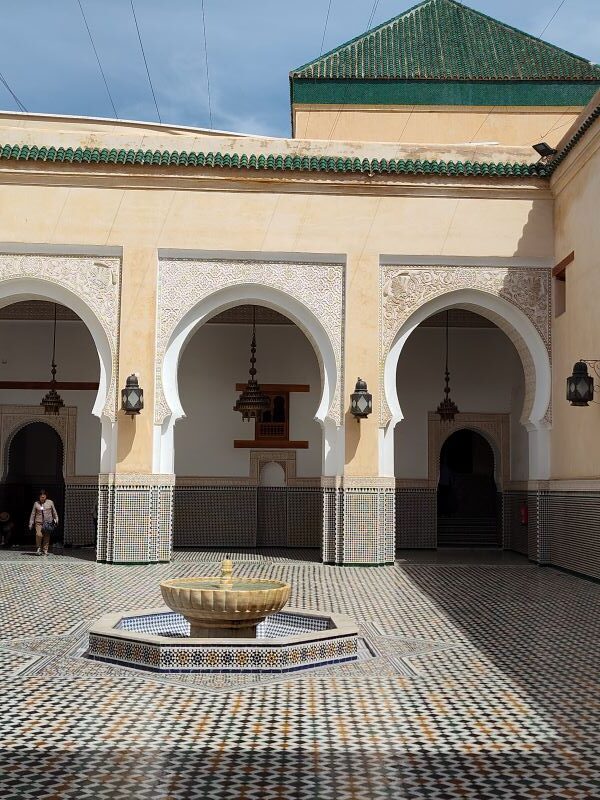
3. Mausoleum of Moulay Ismail
The Mausoleum of Moulay Ismail is one of the most significant historical and religious sites in Meknes, dedicated to the powerful 17th-century sultan who made the city his imperial capital. While many religious sites in Morocco are closed to non-Muslims, this mausoleum is one of the rare exceptions, allowing visitors to appreciate its serene beauty and architecture. Inside, you’ll find quiet courtyards, decorative arches, and finely detailed tilework that lead to the sultan’s final resting place. The atmosphere is peaceful and respectful, offering a glimpse into the grandeur of Moulay Ismail’s reign and the artistry of Moroccan craftsmanship.
- Final resting place of Sultan Moulay Ismail
- One of the few religious sites in Morocco non-Muslims can enter
- Decorated with zellij tilework and marble columns
Here’s a little history and information about Moulay Ismail to learn more about this ruler.

Interior courtyard to the Mausoleum
4. Royal Stables (Heri es-Souani)
The Royal Stables, also known as Heri es-Souani, are a massive and impressively engineered complex built by Sultan Moulay Ismail to house his royal horses and store grain. Designed to accommodate up to 12,000 horses, the structure showcases the ambition and logistical planning of the sultan’s rule. Though partially in ruins due to an earthquake in the 18th century, the remaining arched halls and thick walls still give a strong sense of the scale and functionality of the space. Walking through the cavernous chambers, you can imagine the precision and order that once defined this part of the royal complex. It’s one of Meknes’ most atmospheric sites and a testament to the sultan’s vision of an organized and self-sufficient imperial city.
- Massive granaries and stables built by Moulay Ismail
- Used to house thousands of horses and store grain
- Impressive engineering and atmospheric ruins
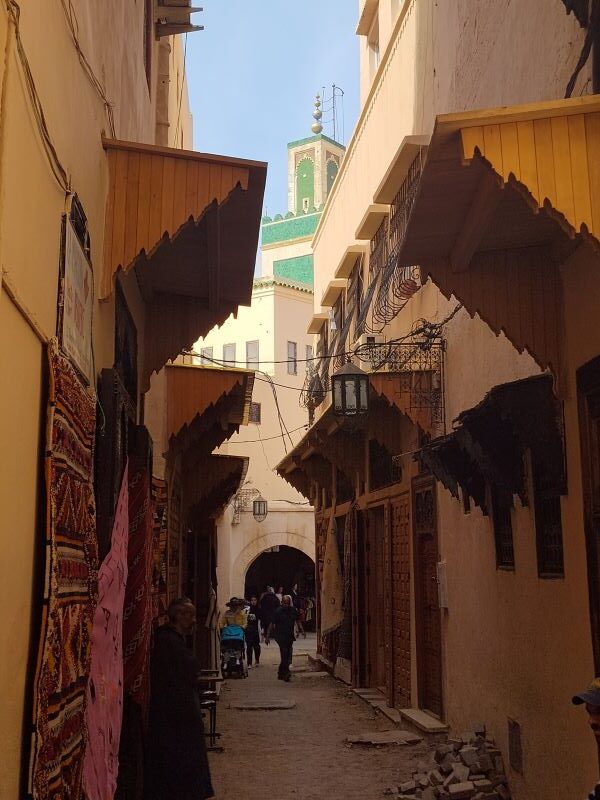
5. Meknes Medina
The medina of Meknes offers a more laid-back and authentic experience compared to the busier, more commercialized old cities in Fes or Marrakech. Enclosed by thick walls and historic gates, it’s a maze of narrow streets filled with local shops, traditional artisans, and everyday life. Here, you’ll find stalls selling spices, textiles, ceramics, and metalwork, often with fewer crowds and less pressure than in other Moroccan cities. The medina feels more lived-in and accessible, making it easier to explore at your own pace. Its quieter charm gives visitors a chance to see the rhythm of local life while still soaking in the historical setting and craftsmanship that define Morocco’s older cities.
I enjoyed touring with the local guide here who shows all the key attractions and hidden areas of the medina that made the tour unique and fun
- Less crowded than those in Fes or Marrakech
- Wander through narrow alleys with souks selling spices, textiles, and handicrafts
- Authentic and less touristy feel
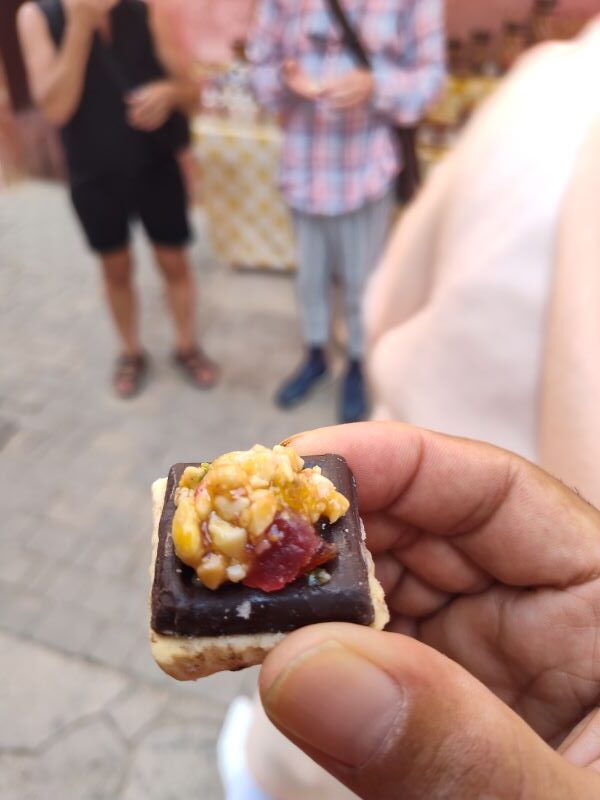
Local sweets from the Medina

Drying roses for sale at the Medina
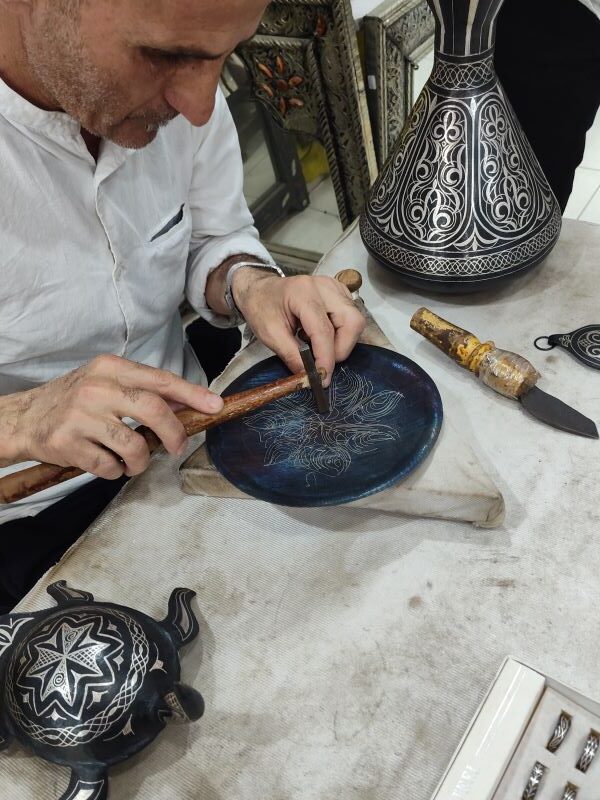
6. Dar Jamai Museum
Dar Jamai Museum, located on the edge of Place El Hedim in Meknes, is housed in a 19th-century palace built in 1882 by the influential Jamai family, who served as viziers to Sultan Moulay Hassan I. The palace exemplifies Moroccan-Andalusian architecture, featuring carved cedar wood, intricate stucco, and colorful zellij tilework. Its tranquil courtyard garden, adorned with orange trees and a central fountain, offers a peaceful retreat from the bustling city. The museum’s diverse collection includes traditional ceramics, textiles, jewelry, and wooden art, reflecting the rich cultural heritage of the Meknes-Tafilalet region. Notable exhibits include brocaded saddles, gold and silver-threaded caftans, and antique carpets representing various Moroccan styles. A highlight is the restored upstairs salon, furnished as a traditional reception room with luxurious rugs and cushions, providing insight into the opulent lifestyle of Morocco’s elite in the late 19th century. Originally transformed into a museum in 1920, Dar Jamai continues to serve as a testament to Moroccan artistry and history. (Malika In Morocco, Morocco Pass, Wikipedia, Lonely Planet)
- Housed in a 19th-century palace near Place El Hedim
- Features traditional Moroccan art, crafts, and architecture
- Peaceful garden courtyard
7. Agdal Basin (Sahrij Swani)
The Agdal Basin, also known as Sahrij Swani, is a large artificial reservoir built during the reign of Sultan Moulay Ismail to supply water to the royal palace and the nearby stables. This vast pool is surrounded by high walls and sits just outside the old city of Meknes, creating a calm and open space that contrasts with the busy medina. The basin was an important part of the city’s water management system and reflects the engineering skills of the time. Today, it offers a peaceful spot for visitors to take a stroll or enjoy views of the surrounding gardens and historic structures, making it a quiet retreat from the city’s hustle.
- Large man-made reservoir built for royal use
- Once supplied water to the royal stables and palace
- Serene spot for a walk or photo
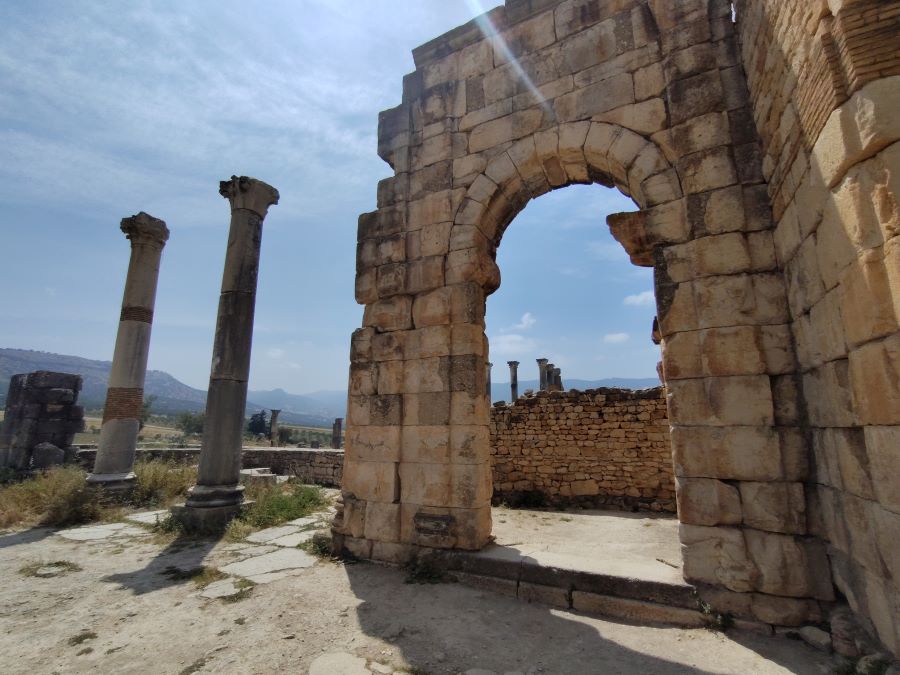
8. Volubilis (Nearby Day Trip)
Volubilis is one of Morocco’s most remarkable archaeological sites, offering a glimpse into the grandeur of Roman North Africa. Located about 30 kilometers (19 miles) from Meknes, this ancient city flourished between the 1st and 3rd centuries AD and was the capital of the Roman province of Mauretania Tingitana. The site is renowned for its well-preserved ruins, including a triumphal arch, basilica, and the Capitol, all set against a backdrop of rolling hills and fertile plains. Notably, Volubilis boasts an impressive collection of mosaics depicting scenes from mythology and daily life, offering insights into the artistic and cultural life of its inhabitants. Declared a UNESCO World Heritage Site in 1997, Volubilis stands as a testament to the rich tapestry of civilizations that have shaped Morocco’s history..
I share my tour highlights to Volubilis on the reference links below.
- Well-preserved Roman ruins about 30 minutes from Meknes
- Known for mosaics, temples, and ancient streets
- UNESCO World Heritage Site
9. Moulay Idriss Zerhoun (Nearby Town)
Moulay Idriss Zerhoun is a picturesque town in northern Morocco, nestled between two verdant hills at the base of Mount Zerhoun. Approximately 30 km from Meknes and just 4 km from the ancient Roman ruins of Volubilis, it offers a unique blend of spiritual significance and natural beauty. The town is renowned as one of Morocco’s most important pilgrimage sites, housing the tomb of Moulay Idriss I, the founder of the Idrisid dynasty and a great-grandson of the Prophet Muhammad. His mausoleum, with its distinctive green-tiled pyramidal roof, is a focal point of the town’s religious and cultural life. Moulay Idriss Zerhoun’s whitewashed buildings cascade down the hillsides, creating a serene and timeless atmosphere. Visitors can explore narrow alleyways, vibrant souks, and enjoy panoramic views from elevated terraces. The town’s unique charm and spiritual heritage make it a compelling destination for those seeking to experience Morocco’s rich history and culture.
- Sacred hilltop town near Volubilis
- Important pilgrimage site in Morocco
- Whitewashed buildings and panoramic views
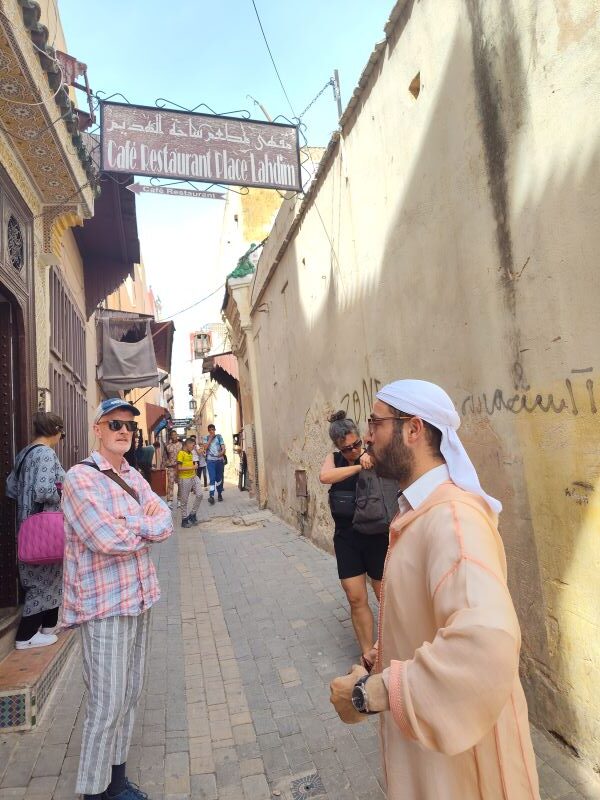
Group Tours to visiting Meknes
I always recommend a group tour when it’s not so easy to do this on your own and it ends up being more expensive than a local tour company. Here’s some of the recommendation tour outfitters starting from Fes and Rabat city.
Private Day Trip to Volubilis, Moulay Idriss and Meknes
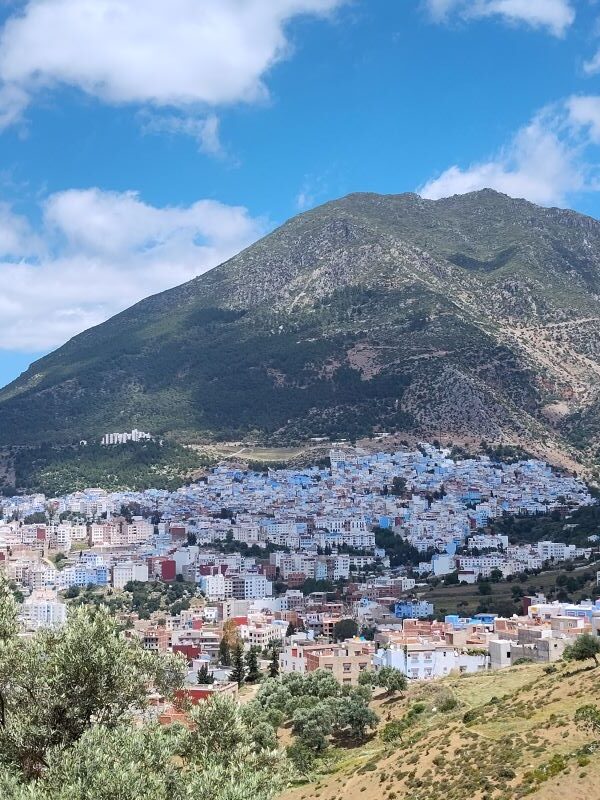
Further reading – touring around Morocco
Check out these other locations to visit around Morocco for more information and images.
Visit the Roman Unesco site at Volubilis
Visit the blue city of Chefchaouen
A visit to the Kasbah and Museum in Tangier
Conclusion to visiting Meknes
Meknes offers a more laid-back and authentic experience compared to Morocco’s more touristed cities, yet it’s packed with history, architecture, and cultural depth. Whether you’re exploring the grandeur of Bab Mansour, wandering through the quiet alleys of the medina, or taking a short trip to the Roman ruins of Volubilis, the city blends the past and present in a way that feels both personal and memorable. If you’re planning a trip to Morocco and want to see a side of the country that many travelers overlook, consider adding Meknes to your itinerary. It’s worth slowing down for.
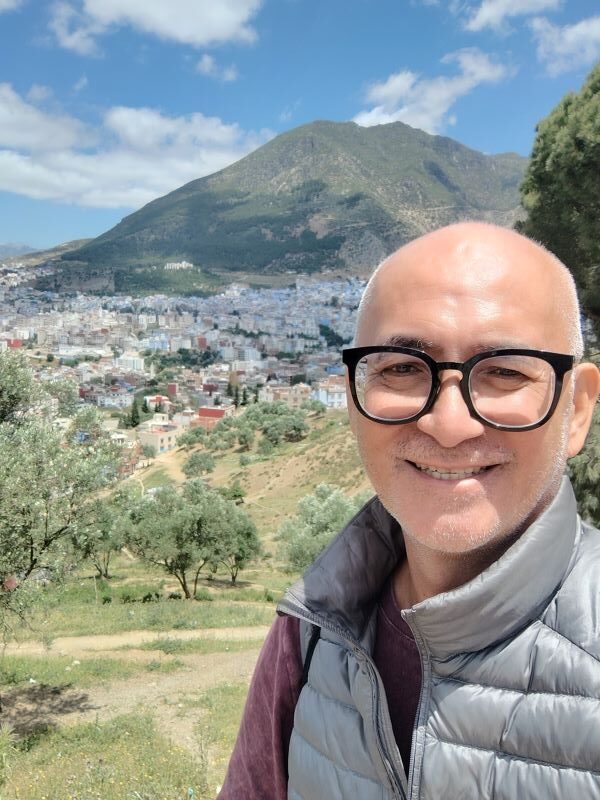
About author – Noel Morata
After relocating from the United States to Andalusia in 2024, I’ve made it my mission to discover every corner of Spain along with many Mediterranean locations, cities and attractions. Based just east of Granada, I’ve spent a lot of time visiting Morocco including multiple extended visits to Marrakesh, Tangier, Chefchaoen and different parts of the country throughout different seasons. My background in history cultural studies and years of residence and exploring all of the Mediterranean countries have given me unique insight into the region’s historical significance, local customs, and culinary traditions.
I regularly update my guides with the latest information gathered through personal visits and relationships with local tourism officials, always seeking what’s new and exciting in each destination. As a self-proclaimed foodie, I’m passionate about discovering authentic local markets and regional specialties.
If you love antiquities and Unesco World Heritage sites, you should visit Meknes here in Northern Morocco
Disclosure – some of the links above to various tours, transportation and hotels are affiliate links that benefits our site if you book here and we appreciate your support. The links are competitive, and you are not paying above what other affiliates provide.
